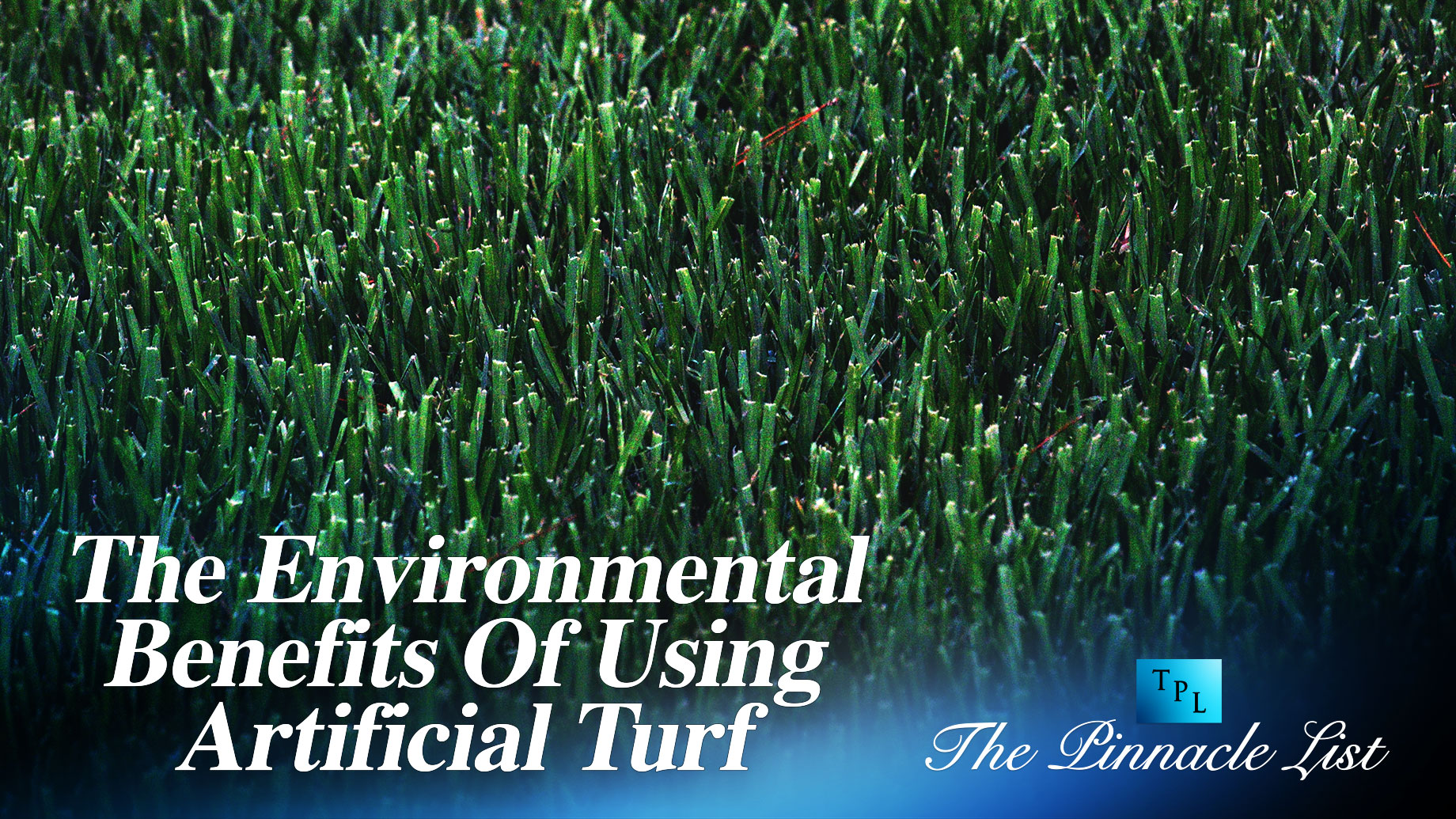
In recent years, there has been a growing interest in finding sustainable alternatives to natural grass lawns and sports fields. One such alternative that has gained popularity is artificial turf. Artificial turf, also known as synthetic grass, is a man-made surface designed to mimic the look and feel of real grass. While some may argue that natural grass is more environmentally friendly, artificial turf actually offers a range of significant environmental benefits. In this article, we will explore the various ways in which artificial turf positively impacts the environment, from water conservation to reduced chemical usage.
Different Types of Artificial Turf: Choosing the Right Option
Let’s start with the basics. When considering artificial turf, it’s essential to understand that there are different artificial turf types available on the market. Some artificial turfs are specifically designed for residential lawns, while others are more suitable for sports fields and high-traffic areas. The choice of artificial turf depends on factors such as intended use, desired appearance, and budget. It is crucial to consult with professionals or manufacturers to select the most appropriate type of artificial turf for your specific needs. By making an informed choice, you can ensure that you maximize the environmental benefits while enjoying the aesthetic and functional advantages that artificial turf provides.
Now that you know something about artificial turf, let’s head to the benefits they provide!
Water Conservation: Preserving a Precious Resource
One of the most compelling environmental benefits of artificial turf is its significant contribution to water conservation efforts. Natural grass lawns require substantial amounts of water to stay healthy and green, especially in dry and arid regions. On the other hand, artificial turf does not need regular watering to maintain its appearance. This means that artificial turf can help conserve thousands of gallons of water each year, easing the strain on local water supplies and reducing the need for irrigation. In areas facing water scarcity or drought conditions, the use of artificial turf can be a practical and responsible choice.
Reduced Chemical Usage: A Safer Option
Maintaining natural grass often involves the use of various chemicals, such as fertilizers, herbicides, and pesticides. These chemicals can leach into the soil, contaminate groundwater, and have adverse effects on local ecosystems. Artificial turf eliminates the need for these chemical inputs, providing a safer and more environmentally friendly alternative. With artificial turf, there is no need for fertilizers to promote growth or herbicides to control weeds. By minimizing chemical usage, artificial turf helps to protect the quality of soil and water resources, creating a healthier environment for both humans and wildlife.
Durability and Longevity: Minimizing Waste
Natural grass lawns require regular maintenance, including mowing, edging, and reseeding, to keep them in good condition. This maintenance generates a significant amount of yard waste, which often ends up in landfills. In contrast, artificial turf is highly durable and can withstand heavy foot traffic, harsh weather conditions, and intense play. It does not require mowing, reducing the generation of green waste. Additionally, artificial turf has a longer lifespan compared to natural grass, meaning it does not need to be replaced as frequently. By minimizing waste generation and extending the lifespan of playing surfaces, artificial turf contributes to a more sustainable waste management system.
Reduced Carbon Footprint: Energy Efficiency
Artificial turf offers another environmental benefit through its energy-efficient characteristics. Natural grass lawns demand regular maintenance, which often involves gasoline-powered equipment like lawnmowers and trimmers. The use of these machines contributes to carbon emissions and air pollution. Conversely, artificial turf requires minimal maintenance, eliminating the need for fossil fuel-powered equipment. Moreover, the production of synthetic grass has also become more sustainable in recent years, with manufacturers incorporating recycled materials and implementing eco-friendly manufacturing processes. By reducing the reliance on fossil fuels and adopting greener production methods, artificial turf helps to mitigate climate change and reduce overall carbon emissions.
Improved Air Quality: Less Pollution
Maintaining natural grass involves regular mowing, which not only consumes fuel but also releases pollutants into the air. The combustion of gasoline in lawnmowers produces harmful emissions, including carbon monoxide and nitrogen oxides, contributing to air pollution and its associated health risks. By eliminating the need for mowing, artificial turf helps to improve air quality by reducing the release of pollutants. Additionally, the absence of chemical inputs, such as fertilizers and pesticides, further contributes to cleaner air. Artificial turf provides an eco-friendly option for individuals and communities who prioritize clean air and a healthier living environment.
Conclusion
Artificial turf offers a range of environmental benefits that make it a compelling alternative to natural grass. From water conservation and reduced chemical usage to durability and reduced waste generation, artificial turf contributes to a more sustainable and eco-friendly approach to landscaping and sports field management. By minimizing water consumption, eliminating the use of harmful chemicals, and reducing the carbon footprint associated with maintenance, artificial turf helps to create a healthier environment for both humans and wildlife. As we continue to explore sustainable solutions in various aspects of our lives, artificial turf emerges as a viable option for those seeking to balance aesthetics, functionality, and environmental responsibility.